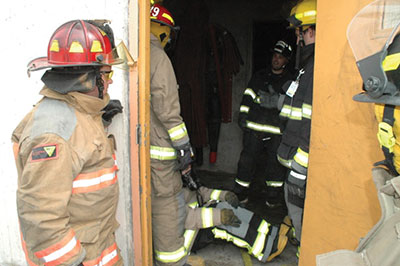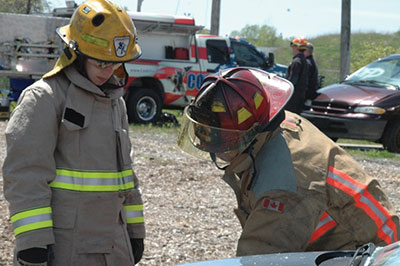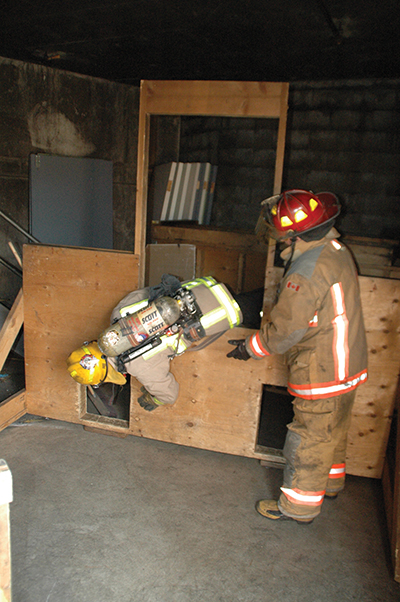
Features
Communication
Training
Trainer’s Corner: March 2014
While developing our department’s standard operational guidelines (SOGs), I was shocked to see the scope of duties performed by the training officer.
February 26, 2014
By Ed Brouwer
While developing our department’s standard operational guidelines (SOGs), I was shocked to see the scope of duties performed by the training officer. Certainly every firefighter and fire officer plays a vital role in Canada’s fire services, but I believe – though I am biased – the highest calling is to be a training officer.
 |
|
| It takes certain character traits to be a great training officer. Think back to your own instructors. What was the most effective training session you attended, and why was it so effective? Photos by Laura King
|
Our guidelines state that all training officers shall – a more palatable term than must – be familiar with and carry out their duties outlined in the operational guidelines and reference documents. While subject to the requirements of written orders and regulations, and the verbal directions of a superior, the training officer will exercise independent judgment and action while in command at fires and rescues. Under the direction of the fire chief, the training officer will develop and deliver the fire department training program to all fire department members.
The guidelines explain that the training officer is responsible for:
- determining the department’s training needs,
- maintaining training records for all fire department members,
- developing the department’s training programs,
- evaluating the continuity of training and the department members’ skills and knowledge,
- scheduling and co-ordinating special training sessions,
- conducting training,
- participating in firefighting operations, at times entailing the command of an incident, apparatus, equipment and department members on the fire ground,
- supervising firefighting activities, including laying hoselines, directing water streams and the required pressure of those streams, placing ladders, ventilating buildings, rescuing victims, administering first aid and placing salvage covers,
- directing the overhaul and cleaning of the premises after the fire has been extinguished,
- supervising the return of all apparatus and equipment to their proper places in the fire hall, and
- compiling and keeping various records and reports, as assigned.
Your department’s SOGs will be close in comparison to those listed above. This represents an impressive yet doable list of responsibilities; and therein lies the rub. Even if you follow these responsibilities to the letter, there is no guarantee that you will be effective in your role as instructor. It takes certain character traits to be an educator.
 |
|
| The practical components of many training officer courses focus on developing lesson plans and teaching the techniques required to prepare and deliver a training program – including exposure to new teaching aids and evaluation methods.
|
Think back to your instructors. I’m sure we have all had some examples of what not to do. But take a moment and reflect on the traits of a person who you felt was a great communicator in the classroom. What was it about that instructor? What was the most effective training session you attended, and why was it so effective?
I want you to become a better-than-average training officer. I encourage you to check out the various fire schools across Canada, looking specifically for a fire instructor course.
If you have a little bit of money set aside in your training budget, attending a fire instructor course is a good investment. Some courses offer a combination of distance education and hands-on workshops. These courses do not teach you how to fight fire – you had better have a handle on that already!
The theory components of these courses usually cover the fundamentals of learning theory, interpersonal communications, an overview of safety and legal considerations for the instructor, management of the learning environment and student behaviour, and lesson plan development.
The practical components focus on developing lesson plans and teaching you the techniques required to prepare and deliver your training program. You will be exposed to training aids and evaluation methods. You may even learn some new methods of record keeping.
 |
|
| It’s important for training officers to advance their skills in order to bring new and effective methods to their departments.
|
Before you dismiss this idea of furthering your education, understand that instructors can only take his or her students where they have gone. A great teacher never stops learning, or as singer Phil Collins said, “In learning you will teach, and in teaching you will learn.”
For many years I have been pushing for training officers to involve their students. Hands-on training is my go-to practice. However, there is a lot of theory in firefighter training and that cannot always be hands-on. Albert Einstein said, “Any fool can know. The point is to understand.”
So how do we get firefighters to understand fire fighting rather than just know how to do it? Benjamin Franklin, who co-founded the first volunteer fire department in Philadelphia, said, “Tell me and I forget, teach me and I may remember, involve me and I learn.”
There are many ways to involve your students in the classroom setting. The website Teachers Pay Teachers (www.teacherspayteachers.com) has downloadable PowerPoint templates for games such as Jeopardy, Family Feud, and Who Wants To Be A Millionaire.
I bought the Jeopardy game for $10 and spent several hours filling in the blanks with Firefighter Level I questions and answers. It was quite easy – and I type with two fingers! We projected the game on the wall of the fire hall, and the firefighters got right into it.
The only limitation to you being an effective fire-service training officer is your level of willingness to advance your personal skills as an instructor. Once you are willing to keep learning, mix in a healthy portion of creative imagination and a good measure of humour.
Until next time please stay safe, and remember to train like lives depend on it.
Ed Brouwer is the chief instructor for Canwest Fire in Osoyoos, B.C., and Greenwood Fire and Rescue. The 24-year veteran of the fire service is also a fire warden with the B.C. Ministry of Forests, a wildland urban interface fire-suppression instructor/evaluator and an ordained disaster-response chaplain. Contact Ed at ebrouwer@canwestfire.org
Print this page